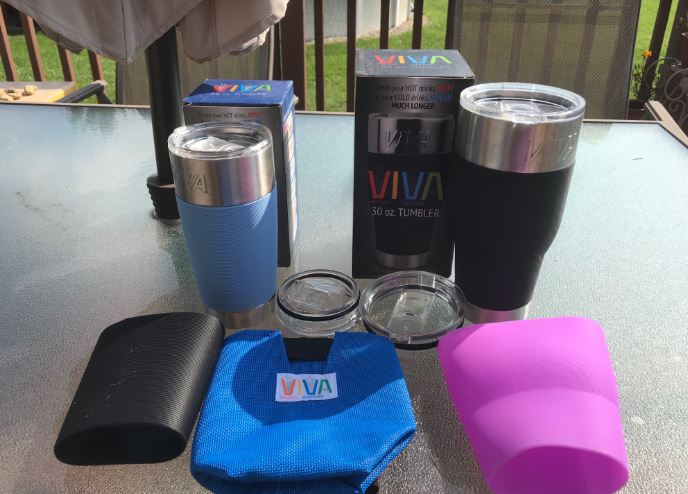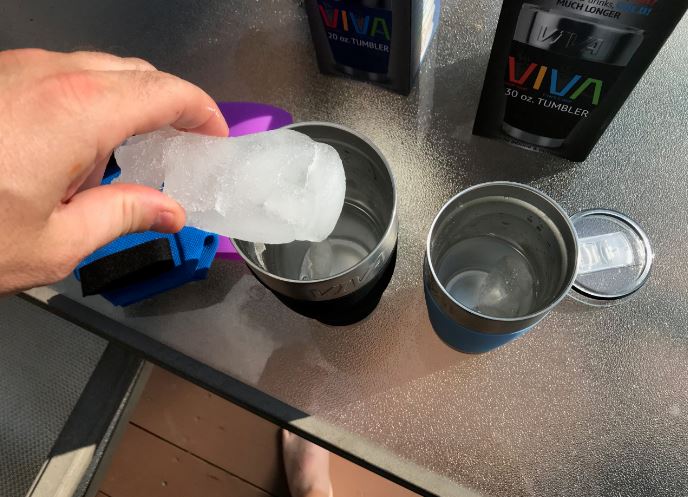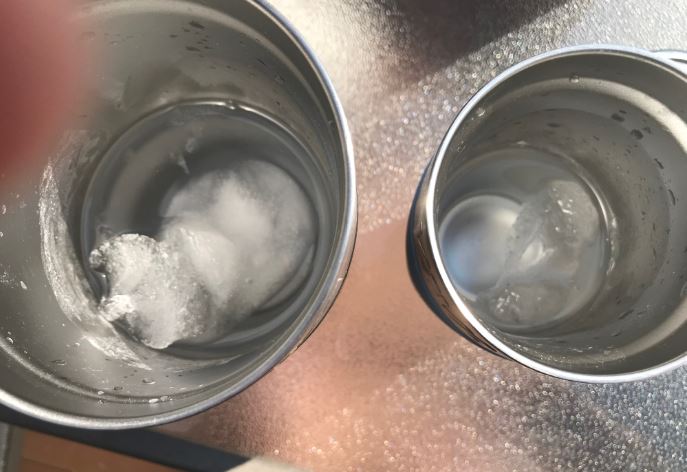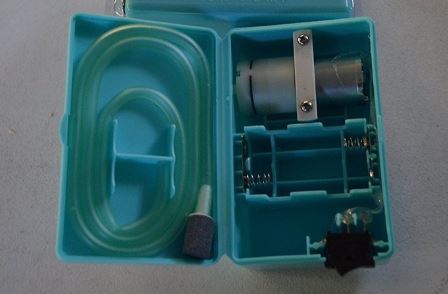Fishing, Hunting and Camping
Tips, articles and reviews by people like you.
Ohero Viva Tumbler Review With Ice Test
Today, we are going review a pulse buy I made of the Ohero Viva Tumbler and will be doing an ice test.
There are so many types of Tumblers on the market, you never know which ones are worth the investment or just plain old junk. Everyone knows you can spend a ton of money on a “good” Tumbler. Sadly, these companies are great at marketing but the same quality can be found at a much cheaper, like half the price.

So as I said above, this was a pulse buy and I took a chance on the Ohero Viva because of a couple features they have. I didn’t know much about the brand itself or if it would worth the space in my cabinet. So, let’s see good or bad it turned out to be.
What I purchased
- 20oz Ohero Viva Tumbler (Under $16)
- 30oz Ohero Viva Tumbler (Under $20)
- Colored Tumbler Sleeves (Under $7)
- Extra Tumbler Lids ( Under $7)
- Tumbler Holders
Features
Since it was the features that caught my eye and talked me into getting these in the first place, let’s start with those.
Silicone Sleeves
As you can see in the above photo, these tumblers come with a silicone sleeve on them. That’s not the feature that caught my eye though. The sleeves remove and can be replaced with other colors.
Why is this important to me? I purchased a 30oz tumbler for myself and a 20oz for my wife. I drink more coffee than her. But, I know I will probably end up getting stuck with the 20oz since she will steal mine to fill up with a margarita to lay out at the pool with. As any good husband would do (lol), I went ahead and picked up a pink sleeve for her. So when that time comes (it came on Labor Day), it will be ready. I also picked up a black 20oz sleeve for when I get stuck with the smaller one. Sorry, but I’m not a powder blue kinda guy!
Non-Slip Bottom

On the other tumblers I have had, the bottom was always metal. Never really thought anything about it until I seen the rubber bottoms on the Viva’s. I would bet that all of us has bumped our tumblers only to it slide off a table or two. With the rubber bottom, it has some pretty good grip. Check out the video below, I show the grip a little.
Besides being “non-gliding”, the rubber bottom also protects whatever the tumbler is sitting on. Now we do not get that big smacking sound on our back deck glass table.
Good Quality Replacement Lids
One thing that I know that I’ll go through once a year is the lid. I will drop my tumbler and eventually, I will break the lid.
The lid that comes with the Viva is thick and solidly made. It fully closes to help keep your drink cold and slides open easily. They sell the exact lids that you can pick up as replacements. I purchased one extra for each tumbler. They were cheap enough where it makes sense, since I’m clumsy.
When dealing with some other brands, you can either not find replacement lids or they are ridiculously expensive. I mean who pays $10+ for a lid?
Fold-able Tumbler Holders
Okay, these may not be for everyone and to be honest, they may not be for me either, but I got a couple for the campsite anyway. I was in full shopping mode lol.
The cup holders are easy to store away and can be folded up. My plan is to strap them to my camper post when sitting outside. Again, not sure yet if this is for me but hey, why not. They seem like they will last a long time and the tumblers do fit well.
The Tumbler Ice Challenge

Okay, so as you can tell by my review so far, you can tell that I really like the look and features of the Ohero Viva tumblers. But that all means nothing if they don’t keep your drink cold! So I did an ice test myself to see just how they hold up.
I filled both my 30oz and 20oz tumblers with ice and let them site for 24 hours in the heat. I was really hoping there would still be ice in them the next morning, not to mention a full 24 hours!
After 24 hours, there was more than just a little ice left in them. There was a big chunk in the 30oz and obviously a little less in the 20oz! 24 hours sitting in the heat and still have that much ice, nice!

Not shown in the video, but I went ahead and left the ice as is for another 24 hours to see what happened. I found that the ice lasted in the 30oz tumbler for about 40ish hours. That my friend is awesome. The 20oz tumbler lasted between 28-30 hours.

Comparing the price between marketed brands like Yeti, the Ohero Viva is way cheaper and preforms at the same level (and has better features). I have never understood why someone would pay so much for a brand name like Yeti unless it is to show that they can afford it.
The Bottom Line
If you are a bog roller just wanting to make sure that everyone around you thinks you have money to piss away, go ahead and stay with Yeti. If you are sensible and just want something that works and looks good, I say give this small brand a try. You save money and can always laugh at your buddy that paid twice as much and doesn’t work any better than yours…
My Video Review of The Ohero Viva Tumbler
Review: Ohero Enviro Livewell Fishing Air Pump
Using live shad is my go to bait to catfishing. Over the past year and a half, we have been throwing a net almost weekly down at camp. Towards the end of last year, I made a homemade livewell (I really gotta get those instructions up soon).
This Issue
The one thing about portable livewells is that you will go through multiple batteries over a weekend. On the air pump I got from Walmart, I’m getting about 8-10 hours before needing to change the 2-D batteries. I’m spending $6-$8 or so per weekend keeping the livewell going.
I ran across a small pump that claimed to get up to 50 hours per set of batteries. Even better, I found it on sale for less than $15. It’s called the Ohero Enviro Fish Pump. Today, we are going to review this pump, test it in my livewell and compare it to the one I have been using. The test will include air output and battery longevity.
The Ohero Enviro Livewell Air Pump
I purchased the Ohero Enviro air pump from justforfishing.com (can find it here).
The claim
Running off of 2-AA batteries, the manufacture claims that you can get up to 50 hours per set of batteries. They also claim quiet and efficient. They do not mention on output flow so you know how large of a livewell this will work on.
The pump itself
As you can see in the photo above, the pump opens up and doubles as a carry case. Once open, it has a place to wrap the hose and keep the air stone. In the middle to the right is where the batteries go. Above that, you have the motor itself. You notice that is a small motor .
How it works

The Enviro Fish Pump is a water resistant self contained pump. Here is how it works:
When you unpack your pump, unpack and remove it from the outer plastic sleeve. Open the pump (photoed above) and remove the hose and air -stone. Insert your batteries and close the pump up. Next, place the pump back into the plastic sleeve and close up. This will make it more water resistant. Once that is done, connect the air-stone to the hose and the hose to the pump. Your all set, you can then clip the air pump to your bucket or livewell and turn on.
Once you are done with the pump, simply do everything in reverse. Remove the air stone and hose, remove the plastic cover, open the pump and place the parts in their respected sections and close up. You may also want to remove the batteries if you will be storing it. You now have it neatly packed up and ready for storage until your next fishing trip.
Size

The size of the pump is small. In the photo above, you see the size compared to the one I got from Walmart. It is much smaller since it is ran off of 2-AA batteries compared to 2-C batteries on the larger one.
The size makes it good for keeping in your tackle box to be used in a 5 gallon bucket while out.
Testing/Comparison Two Pumps
Noise Comparison/Air Output Video
Noise
As you see in the video, the noise compared to the other is much quieter. About half the loudness as the other. This makes since because your dealing with a smaller motor and less battery power.
Airflow
The Enviro air pump put out less airflow than the other but, I think it is what I need. The more powerful pump is made for larger livewell. It pumps at the same rate or more than a 20 gallon fish tank would take. The Enviro pump should fit my homemade livewell and a 5 gallon bucket just fine.
One issue I was running into with the larger livewell pump was it would turn creek water I had in my livewell very fast. I would need to swap out the water every hour or so. With the Enviro fish pump, it is lasting much longer. It’s not overkill like the larger.
How long it last on a set of batteries
I did a test on to see how long 2-AA batteries lasted in the Enviro. I got about 40 hours out the new batteries. This is over twice as long as the larger using C batteries. It is not the 50 hours as claimed but I will update this review after I run a few sets through it. Time will depend on many things like battery age.
The Bottom line
So here is the bottom line, it depends on what you need. The Enviro fish pump for a livewell is a solid choice for someone that uses a small livewell or bucket to keep live bait. It is not a good choice if you have a large (on-board) boat livewell.
It uses 2-AA batteries, it lasts longer than my other larger pump, the airflow fits what I need and not overkill and it is quiet. You can’t ask for much more if you have a small set-up.




